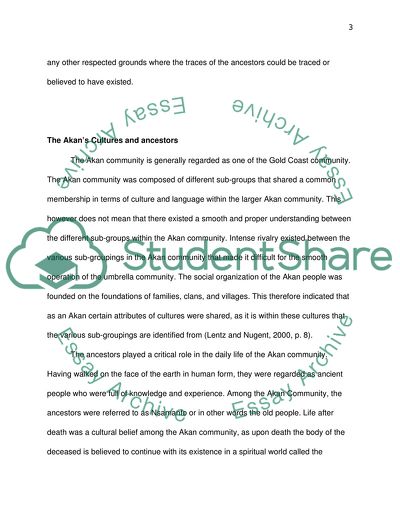Cite this document
(Ancestral Veneration of the Akan Community Essay, n.d.)
Ancestral Veneration of the Akan Community Essay. Retrieved from https://studentshare.org/sociology/1751432-african-american-studies-ancestral-veneration
Ancestral Veneration of the Akan Community Essay. Retrieved from https://studentshare.org/sociology/1751432-african-american-studies-ancestral-veneration
(Ancestral Veneration of the Akan Community Essay)
Ancestral Veneration of the Akan Community Essay. https://studentshare.org/sociology/1751432-african-american-studies-ancestral-veneration.
Ancestral Veneration of the Akan Community Essay. https://studentshare.org/sociology/1751432-african-american-studies-ancestral-veneration.
“Ancestral Veneration of the Akan Community Essay”. https://studentshare.org/sociology/1751432-african-american-studies-ancestral-veneration.


